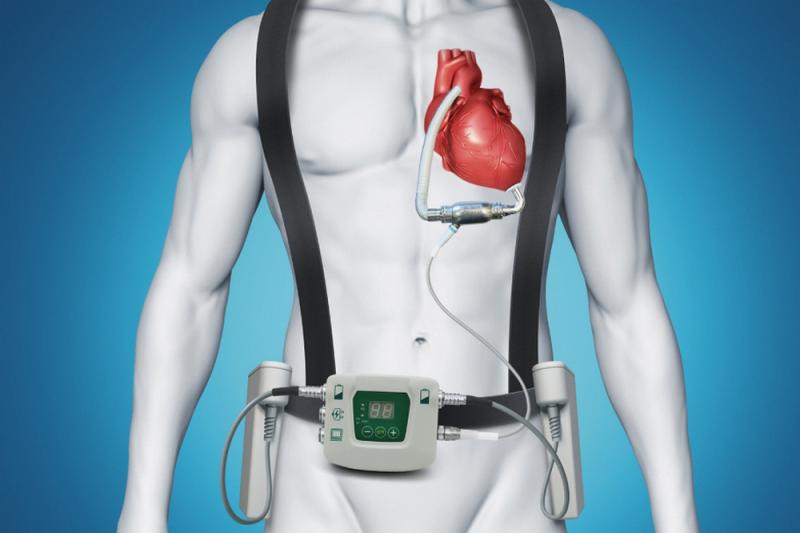Cardiac assist devices have emerged as revolutionary advancements in the management of heart failure and other severe cardiac conditions. These devices provide mechanical support to a weakened heart, enhancing cardiac output and improving patient quality of life. The continuous innovation in cardiac assist technology has not only increased survival rates but also expanded therapeutic options for patients in advanced stages of heart disease.
Cardiac Assist Devices explores the various types of cardiac assist devices, their clinical applications, recent technological advancements, and market trends affecting their adoption worldwide. It also highlights available comprehensive industry and market analyses to direct healthcare professionals, investors, and policymakers toward informed decision-making.
Understanding Types of Cardiac Assist Devices and Their Functional Mechanisms
Cardiac assist devices primarily include ventricular assist devices (VADs), intra-aortic balloon pumps (IABPs), and total artificial hearts (TAHs). VADs are the most commonly utilized temporary or long-term mechanical circulatory support systems, with left ventricular assist devices (LVADs) being predominant. These devices aid the left ventricle by pumping blood efficiently into the aorta, significantly reducing the workload on a failing heart. Right ventricular assist devices (RVADs) and biventricular assist devices (BiVADs) address support for one or both ventricles, respectively, based on the patient’s cardiac deficits.
Intra-aortic balloon pumps function by inflating and deflating a balloon in the aorta, timed with the cardiac cycle to improve coronary blood flow and reduce myocardial oxygen demand. This percutaneous approach is often applied temporarily during acute heart failure or cardiac surgery.
Total artificial hearts are implantable devices designed to replace the function of both ventricles entirely. While less common due to complexity and invasiveness, TAHs serve as a critical option for patients awaiting heart transplantation.
Clinical Applications and Patient Selection Criteria for Mechanical Cardiac Support
These cardiac assist devices have specific indications depending on the severity and type of heart failure. VADs are used as a bridge to heart transplant, destination therapy for patients ineligible for transplantation, and sometimes as a bridge to recovery when myocardial function is expected to improve. Patient selection involves rigorous assessment including evaluation of hemodynamics, end-organ function, and overall clinical stability.
IABPs are indicated mostly in acute settings such as cardiogenic shock, acute myocardial infarction complicated by heart failure, and as perioperative support during cardiac surgery. However, their temporary nature limits long-term use.
The implantation of a total artificial heart is reserved for end-stage biventricular heart failure when other assist devices are inadequate or contraindicated. It requires highly specialized surgical techniques and post-operative management to minimize complications like thrombosis and infection.
Technological Innovations Driving Market Growth and Device Efficiency
The cardiac assist device industry continues to witness rapid technological advancements geared toward miniaturization, durability, biocompatibility, and ease of implantability. Emerging trends include the development of wireless energy transmission systems to reduce infection risks associated with driveline cables, and improved hemocompatible coatings to lower the incidence of blood clots.
Smart sensors integrated into devices now allow real-time monitoring of cardiac performance and early detection of device malfunction, facilitating prompt clinical intervention. Moreover, improvement in battery technology has enhanced portability and patient mobility, which directly contributes to an improved lifestyle for device recipients.
Competitive Landscape in Cardiac Assist Devices Sector
The global cardiac assist devices market is characterized by strong growth prospects fueled by rising cardiovascular disease prevalence, increasing geriatric population, and advancements in medical technology. Market dynamics also reflect heightened investments by prominent medical device manufacturers focusing on product innovation and strategic partnerships.
Competitive strategies revolve around launching next-generation devices with superior clinical outcomes, expanding geographic reach, and increasing accessibility through cost-effective solutions. Understanding regional disparities in cardiac care infrastructure helps stakeholders tailor their approach to market penetration.
A detailed market research report provides strategic insights on competitive positioning, emerging trends, and future opportunities within the cardiac assist devices domain. It enables potential investors, healthcare providers, and policy planners to navigate the complex market landscape, ensuring alignment with evolving patient needs and technological progress.
Regulatory Framework and Reimbursement Landscape Influencing Cardiac Device Adoption
Regulatory approvals and reimbursement policies significantly impact the adoption rate of cardiac assist devices. Device approvals require stringent clinical data demonstrating safety and efficacy, with different regions maintaining specific regulatory pathways. Reimbursement policies vary globally and are critical for device accessibility, often dictating patient eligibility and affordability.
Healthcare providers and manufacturers work closely with regulatory agencies to streamline device approvals and with payers to establish sustainable reimbursement models. Optimizing these frameworks ensures timely patient access to life-saving cardiac assist devices and encourages innovation through industry confidence.
The landscape of cardiac assist devices is dynamically evolving, providing crucial mechanical cardiac support that substantially enhances survival and quality of life for heart failure patients. Comprehensive industry data offers valuable insights into current market trends, technological innovations, and clinical application strategies, supporting stakeholders aiming for optimal decision-making in this vital healthcare segment.
Get this Report in Japanese Language: 心臓補助装置
Get this Report in Korean Language: 심장 보조 장치
Read More Articles Related to this Industry
Innovative Technologies and Research by Anti Venom Manufacturers
About Author:
Money Singh is a seasoned content writer with over four years of experience in the market research sector. Her expertise spans various industries, including food and beverages, biotechnology, chemical and materials, defense and aerospace, consumer goods, etc. (https://www.linkedin.com/in/money-singh-590844163)
